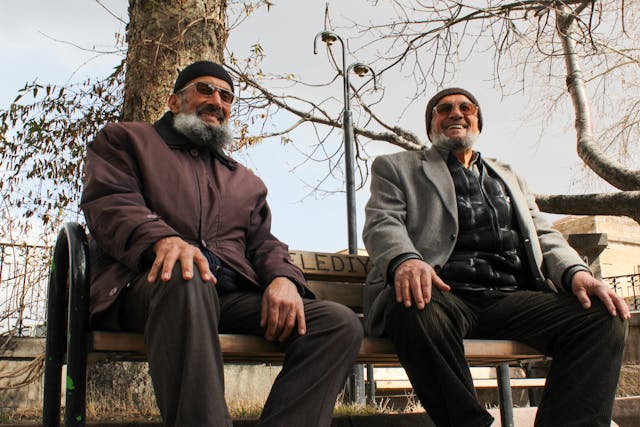Healthy ageing and longevity are intricate, multifactorial phenomena shaped by the dynamic interplay of genetic, epigenetic, metabolic, immune, and environmental determinants. Long-lived individuals (LLIs), particularly centenarians, serve as exceptional models for understanding these mechanisms because of their remarkable ability to avoid or significantly delay the onset of age-related diseases. This review synthesises the current knowledge landscape regarding the myriad factors underpinning exceptional longevity, drawing upon insights from diverse population studies of LLIs.
LLIs, generally defined as those who survive beyond 90 years, exhibit strikingly distinctive health profiles. These individuals tend to experience lower rates of morbidity, a delayed onset of chronic conditions, and a preservation of physiological functions well into advanced age. Notably, many LLIs are found in “longevity blue zones”, such as Okinawa in Japan and Sardinia in Italy, regions where favourable environmental conditions and lifestyle practices intersect with genetic predispositions. Gender differences also play a significant role, with women forming the majority of centenarian populations, though male centenarians often display a reduced burden of age-related diseases. Within this heterogeneous group, LLIs can be further classified as “escapers,” who avoid major diseases entirely; “delayers,” who postpone them until later in life; and “survivors,” who manage to live with chronic illnesses while maintaining resilience.
Genetics contributes substantially to longevity, as evidenced by the familial clustering of LLIs, which suggests a heritable component. Several nuclear genomic variants have been identified as significant contributors to healthy ageing. Among these, APOE ε2 is notable for its protective effect against cardiovascular disease and Alzheimer’s. At the same time, FOXO3A plays a role in oxidative stress resistance and DNA repair, which is crucial for maintaining cellular integrity. SIRT6, another prominent gene, is involved in genome stability and maintenance. Mitochondrial haplogroups J and D have been associated with reduced oxidative stress levels, contributing to healthier cellular environments. Telomere maintenance genes, such as hTERT and TERC, are vital for chromosomal stability and cellular longevity. However, genome-wide association studies (GWAS) consistently highlight APOE and FOXO3A as the most robust genetic factors associated with longevity across diverse populations, underscoring their pivotal influence.
Beyond genetic predispositions, epigenetic mechanisms serve as a bridge between inherited factors and environmental influences. Studies of DNA methylation in LLIs have shown that these individuals exhibit a slower rate of age-related methylation loss, particularly within heterochromatic regions of the genome. This epigenetic stability may act as a safeguard for genomic integrity, forestalling the onset of age-related dysfunctions. Additionally, noncoding RNAs, such as microRNA miR-363* and long noncoding RNAs, like THBS1-IT1/AS1, modulate cellular senescence and gene expression, thereby contributing to maintaining health and vitality. Such epigenetic markers are increasingly recognised as signatures of biological youthfulness and a diminished risk of disease in LLIs and, interestingly, in their offspring.
Metabolic adaptations also feature prominently in the health profiles of LLIs. They generally exhibit favourable lipid metabolism, with lower low-density lipoprotein (LDL) cholesterol and higher high-density lipoprotein (HDL) cholesterol levels. These metabolic profiles are coupled with reduced insulin resistance and heightened antioxidant defences. Hormonal profiles in LLIs often reflect lower thyroid hormone levels and preservation of sex hormones, such as estradiol in females and testosterone in males, which are believed to play protective roles against age-related decline. Caloric restriction (CR), a dietary intervention well-established in model organisms, mimics these metabolic states by improving glucose metabolism and mitigating inflammation. CR mimetics, including metformin and resveratrol, hold promise in replicating these benefits in humans without the challenges of stringent dietary restrictions.
The immune system of LLIs also undergoes significant modulation, which likely contributes to their disease resistance. Unlike the chronic low-grade inflammation typically seen in older adults, known as “inflammaging,” LLIs demonstrate lower levels of pro-inflammatory cytokines such as interleukin-6 (IL-6) and higher levels of anti-inflammatory cytokines like transforming growth factor-beta (TGF-β) and interleukin-10 (IL-10). Their immune systems retain robust T-cell proliferation and natural killer cell activity, reflecting an enduring ability to fend off infections and malignancies. Furthermore, the balance within T-cell populations shifts towards the dominance of regulatory T cells (Tregs) over pro-inflammatory Th17 cells, fostering an anti-inflammatory milieu conducive to longevity.
Environmental and lifestyle factors remain critical to the equation of healthy ageing. Studies of the gut microbiota in LLIs reveal greater microbial diversity and an abundance of health-promoting bacteria, such as Akkermansia muciniphila and Bifidobacterium species, contributing to gut integrity and the production of beneficial metabolites. Diets rich in plant-based foods—vegetables, whole grains, and nuts—are consistently linked to a lower incidence of chronic diseases such as diabetes, cardiovascular ailments, and neurodegenerative disorders. Regular physical activity, especially endurance and strength training, further enhances metabolic health and supports mitochondrial function, mitigating the oxidative stress that accelerates ageing. Additional lifestyle practices, including non-smoking, moderate alcohol consumption, restful sleep, and effective stress management, create a framework that bolsters health and extends lifespan.
Socioeconomic and medical advancements have undoubtedly increased average life expectancy through improved sanitation, vaccinations, and healthcare systems. Yet, the interplay of genetic and epigenetic factors underpins the exceptional longevity observed in LLIs. Future research that harnesses the power of multi-omics approaches—including transcriptomics, proteomics, and metabolomics—promises to unravel the complex networks that govern healthy ageing in larger LLI cohorts. In parallel, functional studies using model organisms and clinical trials of interventions such as probiotics and CR mimetics will be essential for translating these insights into therapeutic strategies.
In conclusion, human longevity emerges from a sophisticated synergy of genetic resilience, epigenetic stability, metabolic flexibility, immune competence, and health-promoting lifestyle choices. Long-lived individuals exemplify the convergence of these factors, offering a living testament to the possibility of delaying ageing and extending health span. As populations around the globe continue to age, deciphering these mechanisms holds the key to developing personalised interventions aimed at enhancing not merely lifespan but also the quality of life in the later years.
More information: Fan-Qian Yin et al, Factors involved in human healthy aging: insights from longevity individuals, Frontiers of Medicine. DOI: 10.1007/s11684-024-1120-4
Journal information: Frontiers of Medicine Provided by Higher Education Press








